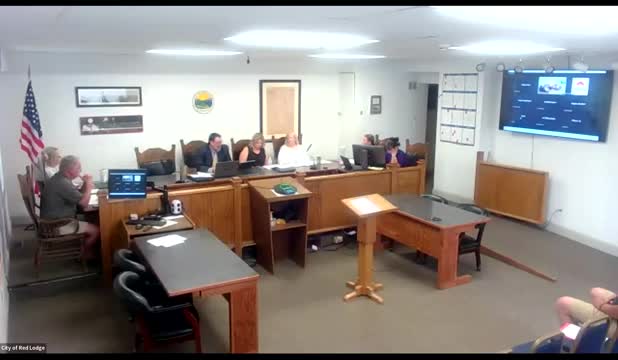Developer faces scrutiny over controversial zoning changes
July 29, 2024 | Red Lodge, Carbon County, Montana

This article was created by AI summarizing key points discussed. AI makes mistakes, so for full details and context, please refer to the video of the full meeting. Please report any errors so we can fix them. Report an error »

During a recent government meeting, discussions centered on the zoning and subdivision processes for a significant development project. The primary focus was whether the developer could create subdivisions under a higher density classification, specifically transitioning from R-3 to R-4 zoning.
The meeting highlighted the complexities of the zoning process, emphasizing that any proposed changes must undergo a three-part approval process involving both the planning board and the city council. The council is not obligated to follow the planning board's recommendations, which adds a layer of uncertainty to the proceedings.
A key point of contention was the potential for increased density, with some council members expressing concerns about the implications of allowing more units per building. Under R-4 zoning, developers could construct more than four units under one roof without needing a conditional use permit, a significant increase from the R-3 allowance of two units. This change could lead to a substantial rise in the number of residents, with estimates suggesting up to 1,500 new residents could be accommodated, although this figure is subject to negotiation based on existing annexation agreements.
The developer's intent to adhere to the established density limits was reiterated, with discussions indicating that the remaining capacity for new hookups is around 310. However, any increase beyond this would necessitate comprehensive impact studies addressing infrastructure concerns such as roads, sewer, and water systems.
The meeting also touched on the conditional use permit process, which allows for negotiations on development conditions to ensure community integration. This process is crucial for maintaining oversight on higher-density developments, as it provides a mechanism for the planning board to impose conditions that align with community standards.
Overall, the meeting underscored the ongoing deliberations regarding zoning regulations and the balance between development and community impact, with further discussions anticipated as the project progresses through the necessary approval stages.
The meeting highlighted the complexities of the zoning process, emphasizing that any proposed changes must undergo a three-part approval process involving both the planning board and the city council. The council is not obligated to follow the planning board's recommendations, which adds a layer of uncertainty to the proceedings.
A key point of contention was the potential for increased density, with some council members expressing concerns about the implications of allowing more units per building. Under R-4 zoning, developers could construct more than four units under one roof without needing a conditional use permit, a significant increase from the R-3 allowance of two units. This change could lead to a substantial rise in the number of residents, with estimates suggesting up to 1,500 new residents could be accommodated, although this figure is subject to negotiation based on existing annexation agreements.
The developer's intent to adhere to the established density limits was reiterated, with discussions indicating that the remaining capacity for new hookups is around 310. However, any increase beyond this would necessitate comprehensive impact studies addressing infrastructure concerns such as roads, sewer, and water systems.
The meeting also touched on the conditional use permit process, which allows for negotiations on development conditions to ensure community integration. This process is crucial for maintaining oversight on higher-density developments, as it provides a mechanism for the planning board to impose conditions that align with community standards.
Overall, the meeting underscored the ongoing deliberations regarding zoning regulations and the balance between development and community impact, with further discussions anticipated as the project progresses through the necessary approval stages.
View full meeting
This article is based on a recent meeting—watch the full video and explore the complete transcript for deeper insights into the discussion.
View full meeting
